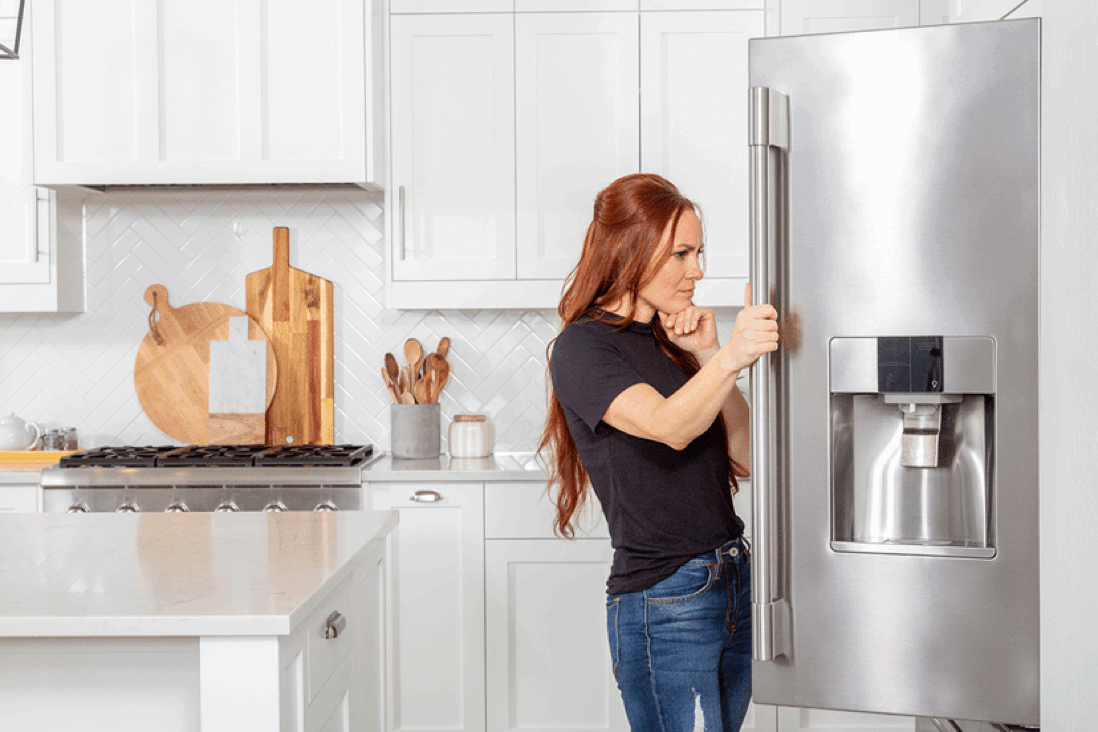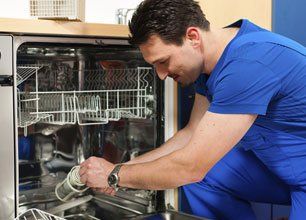The Ultimate Overview to DIY Device Repair Work Methods
From refrigerators to dish washers, understanding exactly how to troubleshoot and repair these devices can conserve you time and cash. Are you prepared to discover important methods that will equip you to manage fixings with confidence?
Understanding Common Home Appliance Issues
When you count on your home appliances, it can be frustrating when they all of a sudden quit working or act up. Comprehending usual device troubles can help you troubleshoot problems efficiently.
If your stove isn't heating, damaged components or thermostat issues can be responsible. Dishwashers usually experience issues with drain, so make sure the filter is clean and the drainpipe hose isn't kinked.
Likewise, listen for uncommon noises; they frequently indicate mechanical issues. By acknowledging these indicators, you can save time and potentially stay clear of expensive repairs. A little understanding goes a lengthy way in keeping your appliances, so stay informed to keep every little thing running smoothly.
Crucial Tools for Do It Yourself Fixes
Prior to diving into do it yourself home appliance fixings, it is necessary to collect the right tools to assure the procedure goes smoothly. Beginning with a good collection of screwdrivers, consisting of both flathead and Phillips, as they're vital for opening up most devices. You'll also want a pair of pliers for grasping and turning wires or small elements.
Do not neglect a multimeter; it aids you test electrical components and identify problems properly. A socket set is convenient for loosening or tightening screws, while an energy knife can be beneficial for opening up or cutting cords packaging.
Ultimately, think about having a flashlight accessible to light up dark spaces inside your devices. With these vital tools, you'll be well-appointed to tackle different repair services, conserving both time and money. So, gather your gear and prepare yourself to roll up your sleeves!
Safety First: Precautions to Take
Before you begin any home appliance repair service, it's necessary to prioritize safety. Ensure you wear individual safety tools, detach the power resource, and keep your workplace organized. These straightforward precautions can aid prevent accidents and guarantee a smoother repair service procedure.

Personal Protective Devices
Safety equipment is an important part of any kind of DIY appliance fixing project. Steel-toed boots are additionally a smart option, particularly when lifting heavy appliances. Keep in mind, being prepared with the best equipment maintains you safe and focused on completing your repair successfully.
Power Resource Interference
To guarantee a safe DIY home appliance repair service, detaching the power resource is essential. Prior to you begin any kind of job, you should unplug the home appliance or turn off the breaker. This basic action prevents electrical shocks and warranties that you can concentrate on the repair service without fretting about accidental activation. Always ascertain that the home appliance is off by checking it with a voltage tester. If you're dealing with bigger devices, like a washer or clothes dryer, make sure to protect the power cable and avoid any kind of contact with water. Bear in mind, safety initially! As soon as you're confident that the power is separated, you can with confidence wage your repair services, knowing you've taken the necessary precautions to secure yourself.
Workplace Company
A well-organized job area can make all the distinction in your Do it yourself home appliance fixing task. Start by removing your work area of clutter to stop distractions and crashes. A neat space not just increases efficiency however likewise keeps you safe while you work on your device repair.
Step-by-Step Guide for Fridge Repairs
When your refrigerator starts acting up, it can be frustrating, but tackling the trouble on your own can conserve you time and money. Check for typical problems like temperature variations or unusual noises. For a noisy fridge, inspect the follower and validate it's not obstructed.
If there's water merging inside, check the door seals for damage or dust, and tidy them if necessary. For ice buildup, clear the defrost drainpipe. As soon as you have actually attended to the concern, connect the refrigerator back in and monitor it for a couple of hours. If the trouble lingers, you may pop over to these guys need to change a damaged component, like the compressor or follower motor. Remember, do not wait to consult the guidebook or look for expert help if required.
Dealing With Cleaning Machine Issues
Just like fridges, cleaning machines can present their very own collection of obstacles, yet many issues can be fixed with a little bit of troubleshooting. If your equipment will not start, check the power cable and confirm it's connected in.
If your clothing aren't obtaining tidy, take into consideration the water level and detergent kind; utilizing excessive cleaning agent can develop excess suds, influencing performance. For leakages, examine the tubes for fractures or loosened links. Tightening these can often fix the issue. Routine upkeep, like cleansing the filter, can stop several problems from emerging. Bear in mind, a little troubleshooting goes a long way in keeping your cleaning maker running efficiently.
Fixing Ovens and Stoves
Just how can you fix common concerns with your oven or range? Start by examining the power supply. Make certain it's plugged in and the circuit breaker is not stumbled. Verify the gas shutoff is open if it's a gas cooktop. Next, examination the heaters: if they don't spark, cleanse the igniter and check for clogs in the heater ports.
If your stove isn't home heating, evaluate the temperature setups and confirm the door seals snugly. If it's damaged., a defective heating element can also look what i found be the offender; you could require to replace it.
For irregular cooking, turn your frying pans and think about utilizing an oven thermometer to verify accurate temperature levels. Lastly, if you listen to uncommon sounds or odor gas, turn off the device immediately and speak with a professional. By following these actions, you can determine and solve several usual stove and range problems effectively.
Fixing Dishwashers Made Easy
When your dish washer starts breaking down, it can be frustrating, however addressing typical problems isn't as tough as it seems. You'll discover step-by-step troubleshooting methods that will certainly aid you determine the issue, along with the vital devices you'll need to take on fixings yourself. Allow's make fixing your dishwasher a wind!
Typical Dishwashing Machine Concerns
While dishwashing machines are designed to make your life easier, they can in some cases run into usual problems that leave you feeling annoyed. If your dishwashing machine's door will not lock, it could be an easy problem with the lock device or door seal. Addressing these issues early can save you time and headache down the roadway.

Step-by-Step Troubleshooting
Before diving into repairs, it's important to recognize the specific problem your dishwasher is encountering. If your dishwasher won't start, examine the power supply and door latch. By methodically attending to each prospective concern, you can identify the trouble and take the essential actions to fix it, making your dishwasher feature like brand-new once again.
Necessary Fixing Devices
Having the right tools at hand can make all the difference when fixing your dish washer. Begin with a screwdriver set, as you'll frequently require both Phillips and flathead choices. A multimeter's important for detecting electrical issues, while pliers can help you grasp and control various global appliance repair parts. Don't forget a container or towels for any water splashes throughout repairs.
You may likewise desire a level to assure your dishwashing machine's properly aligned. With these crucial devices, you'll be fully equipped to tackle any kind of dishwashing machine repair challenge that comes your way.
Frequently Asked Inquiries
Exactly how Do I Figure out if a Home Appliance Deserves Repairing?
To identify if a device's worth fixing, consider its age, repair service costs, and present value. If repair work surpass half the substitute cost, you may desire to spend in a new model instead.
Can I Find Substitute Components Locally for My Home Appliance?
Yes, you can usually discover substitute components locally for your home appliance. Inspect hardware shops, home appliance service center, or neighborhood classifieds. Do not forget to bring the version number to ensure you get the correct component!
When Repairing Appliances?, what Usual Mistakes Should I Prevent.
When repairing devices, prevent rushing with diagnostics, disregarding safety preventative measures, or utilizing incorrect devices. Don't miss checking out manuals or enjoying tutorials; they offer important advice. Be client and extensive to guarantee effective repairs and stop further damages.
Exactly how Lengthy Does a Normal DIY Home Appliance Repair Take?
A regular DIY appliance repair service usually takes one to three hours, depending on the intricacy. You'll wish to gather your products and tools initially, and follow guidelines very carefully to avoid unnecessary hold-ups.
Are There Any Kind Of Guarantees for Do It Yourself Device Fixes?
When you tackle do it yourself appliance fixings, guarantees usually don't cover your job. Some producers could recognize warranties for parts you change. Constantly examine your home appliance's service warranty terms prior to starting any fixings to avoid problems.
Prior to diving right into DIY home appliance repairs, it's vital to gather the right tools to ensure the procedure goes efficiently.Before you begin any home appliance repair work, it's crucial to focus on safety and security.To assure a risk-free Do it yourself device repair service, disconnecting the power resource is crucial.An efficient job location can make all the difference in your DIY device fixing project. Always inspect your home appliance's guarantee terms prior to starting any type of repairs to avoid problems.